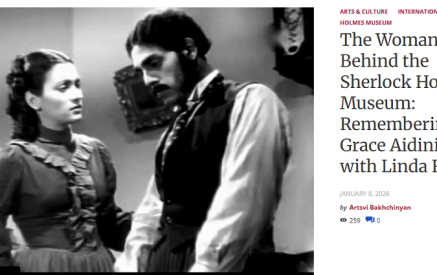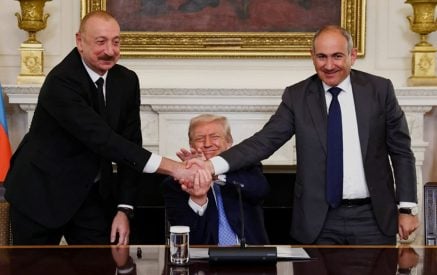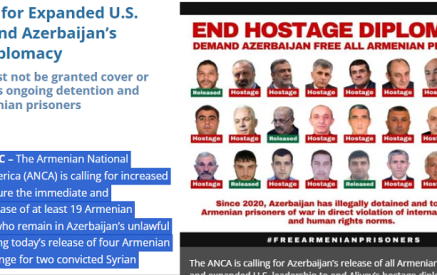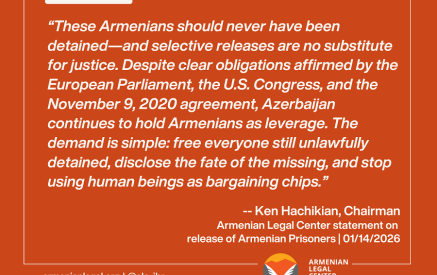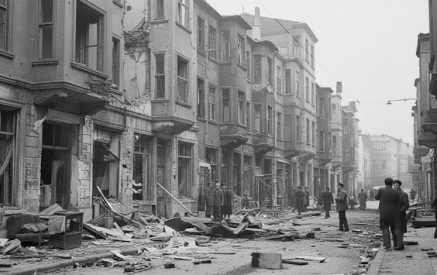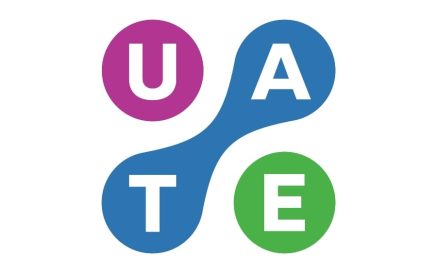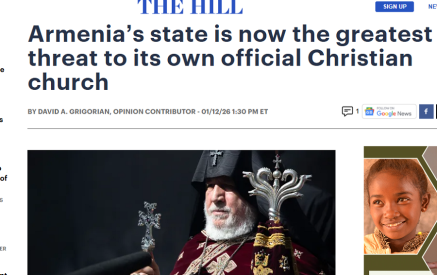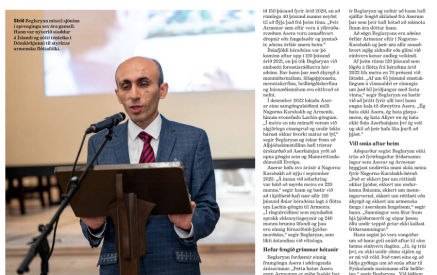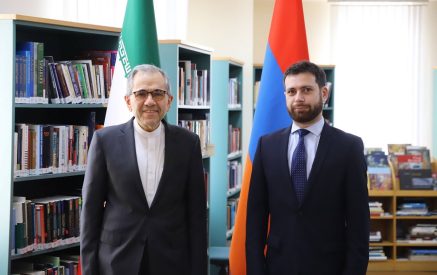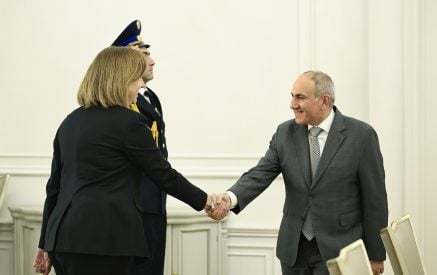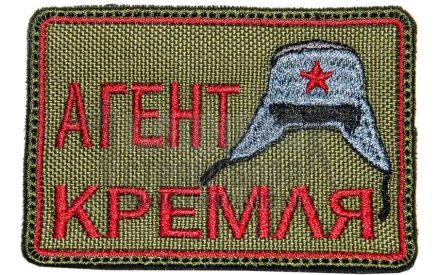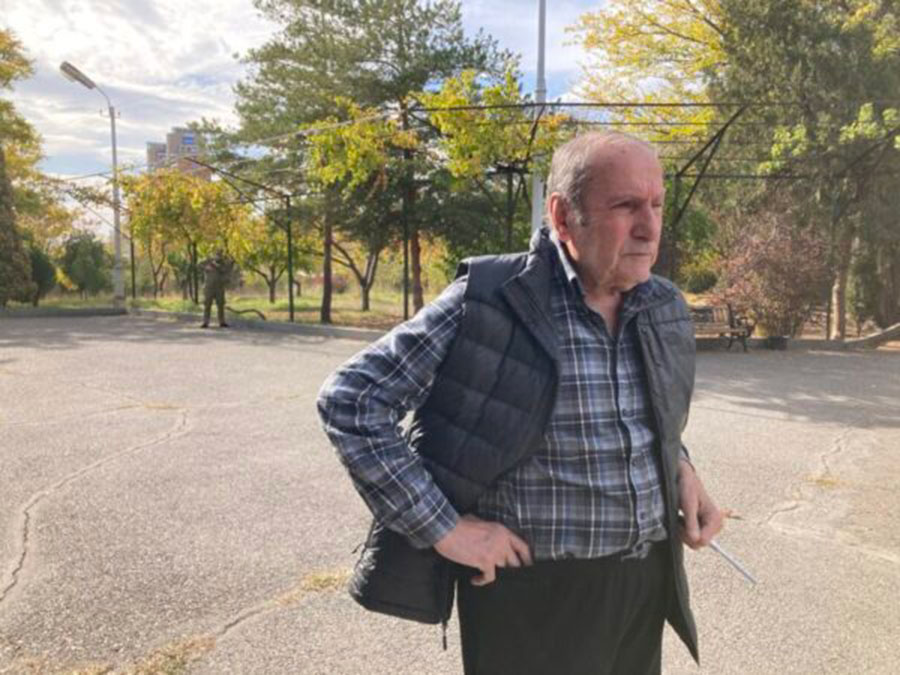By Avedis Hadjian
The Armenian National Congress recently released a statement rebutting a comment by Armenia’s Prime Minister Nikol Pashinyan claiming that Levon Ter-Petrosyan, the first president of the Republic of Armenia after it regained its independence in 1991, had prevented a solution to the Nagorno-Karabakh dispute. “My conclusion is that after the 1996 OSCE [Organization for Security and Cooperation in Europe] Lisbon summit, the Nagorno Karabakh issue ceased to exist,” Pashinyan said. “This is the whole truth: the clerical-feudal elite, hiding and manipulating the Lisbon document, used the Nagorno-Karabakh issue to seize and hold power in Armenia.”
In this piece, we are not going to address the complexities involved in the negotiation of the Nagorno-Karabakh conflict. After the ethnic cleansing of the Armenian population of Nagorno-Karabakh in September 2023 by Azerbaijan, that conversation is moot. Yet we will make an attempt, worthy of further and more extensive elaboration in the future, to set the record straight about Ter-Petrosyan. Just quoting him will suffice, for all his words are backed up by facts and so are, tragically for the Armenian people, the predictions he had been warning about for three decades.
When asked questions, Ter-Petrosyan tends to say with a smile that he is not a prophet. While it may be in a faux yet friendly self-deprecating spirit, and probably against his will, he has been indeed a prophet of the kind nobody likes to listen to, for bitter truths can hardly please anyone. Thus, the historian who looked at the future with foreboding, has been willfully ignored, at best, and very often maligned on the strength of hearsay alone and unfounded rumors, at the price of seeing things happen. Yet as has been known for at least for two millennia, “No prophet is accepted in his own country” (Luke 4:24).
Read also
In his seminal essay “War or Peace? Time to Get Serious,” in 1997, Ter-Petrosyan, who would still be the sitting president of Armenia for another year until he was deposed in a palace coup d’état by Robert Kocharyan, enunciated four questions, the answers to which were the core of his argument: 1. Should the Karabakh issue be resolved by war or by peaceful negotiations? 2. Is it possible to preserve permanently or perhaps for a long time, the status quo and the unresolved status of the Karabakh issue? 3. What is beneficial for Karabakh and Armenia: the resolved or unresolved status of the issue? 4. Should the issue be resolved by mutual concessions or the defeat of one of the parties, and in that case, who will be the defeated party?
His answers were: 1. War must be ruled out; hence, the Karabakh issue must be exclusively resolved via peaceful negotiations. 2. It is not possible to preserve the status quo for long, because that will not be allowed neither by the international community nor Armenia’s economic capabilities. 3. The unresolved status of the issue is not beneficial for Karabakh and Armenia, because it considerably hinders Armenia’s, and therefore also Karabakh’s economic development; it creates complications in the relations with the international community and especially the neighboring countries, which can have fateful significance. 4. The only alternative for the solution of the Karabakh issue are mutual concessions, which does not mean victory for one side and defeat for the other, but a possible agreement achieved following the culmination of the conflict.
The president of Armenia then warned against entertaining ideas about possible alternatives to the mutual concessions. “The alternative to mutual concessions is war.” In the prophetic paragraph that followed, he added: “Rejection of mutual concessions and maximalism (the tendency to obtain the maximum and not what’s possible) is the shortest road to the absolute fall of Karabakh and the worsening of Armenia’s situation.”
Critics failed to see that for a country like Armenia to hold on to territory not recognized by the international community, in other words, odious as it sounds to Armenian ears, “occupying” territory, was extraordinary and quite a feat, as a republic of officially 11,500 square miles (29,700 square kilometers) had liberated and controlled territory — including regions from Azerbaijan proper — that enlarged Armenian-controlled territory to some 17,700 sq. mi. (46,000 sq. km.), thereby increasing its territory by almost 60 percent. Just to compare with two major cases of international occupation, Northern Cyprus by Turkey and Palestinian territories by Israel, both countries were able to sustain their occupation regimes on their own, but also were under American cover, as both occupations were enabled by the United States. Other than the conditional Russian support, in this sense Armenia was an orphan.
That Armenia was able to hold onto that territory also speaks volumes about the ability of Armenian governments and diplomacy for as long. Yet, as Ter-Petrosyan had been warning, the dilatory tactics could only work for so long. And it did end, as we now all know.
In “War or Peace?”, Ter-Petrosyan also hinted, without explicitly saying so, at an alternative formula for a settlement of the Nagorno-Karabakh question that would be short of independence or reunification with Armenia. The issue was not, he said, “giving or not giving Karabakh.” It was, he added, about keeping Karabakh Armenian. “It has been inhabited by Armenians for 3000 years and 3000 years later it still has to be inhabited by Armenians.” Perhaps what Archbishop Mikael Ajapahyan, the primate of Gyumri, recently said in an interview with Civilnet’s Arshaluys Mghdesyan, that the Armenian Church would have been able to preserve Karabakh, can be interpreted along these lines too. Archbishop Mikael did not elaborate in what capacity or what kind of status.
It is often forgotten that the Armenian Apostolic Church, now much maligned by a tiny minority of Armenians, is the oldest continuously functioning both national and universal Armenian institution, if we may be forgiven for using a reductionist terminology, and with over 1700 years of institutional memory it does know things that others still do not.
Time and again, Ter-Petrosyan insisted that then, when Armenia had the upper hand, was the best moment to have negotiated with Azerbaijan, from a position of strength. This view was recently repeated almost verbatim by veteran U.S. diplomat Edward Djerejian in an interview with Civilnet’s Eric Hacopian.
“What went wrong is when Armenia won the 1994 war, and it occupied the seven districts of Azerbaijan in Nagorno-Karabakh, Armenia’s diplomatic negotiating position was very strong,” said Djerejian. “Armenia had something that Azerbaijan desperately wanted back: the Armenians could have negotiated some sort of acceptable solution where Artsakh would have a level of autonomy in exchange for giving up these occupied territories.” Armenia, he added, “had a very strong hand,” and he said he had “warned early on that if Armenia did not initiate a strategic negotiation on this, Azerbaijan with its oil and gas wells would be able to build up its military capabilities and in the next war, Armenia may not win that war; Azeris would.” He added, as we all know: “That happened.”
Indeed, in 2007, ten years after penning “War or Peace?”, Ter-Petrosyan alerted that if Armenia and Azerbaijan were on a relatively equal footing as the Soviet Union collapsed, with the tempo of its economic growth and its military buildup it would soon vastly overtake Armenia. Hence, he warned, the Azeris were in no hurry to sit at the negotiating table as they kept buying time, with the results that we now know.
Ter-Petrosyan attributed the maintenance of the status quo to two converging circumstances: Nagorno Karabakh was “the 1,000th priority of an international community busy with other issues,” and to “Azerbaijan biding its time and rearming.” In 2008, Ter-Petrosyan had seen the gap between Armenia and Azerbaijan growing. By the time the 2020 war broke out, that difference in weaponry, economy and international standing had magnified while Armenia was, as far its defense was concerned, a military outpost of Russia.
Russia had begun aligning its military and economic interests with the Turkish-Azerbaijani axis years before. Even in the mid-2000s, Ter-Petrosyan had predicted that Russia would never recognize Karabakh, for “Russia has 20 Karabakhs within its borders.” Indeed, by the time of the four-day war in April 2016 in Karabakh, only the willful blind would fail to see that Russia had begun deserting its duties towards Armenia and had chosen to side with Azerbaijan, for a convergence of interests.
Aside from the limits of Russian commitment to Armenia’s defense, Ter-Petrosyan had been warning about the international community too. The notion of “international community” sounds abstract and that’s why it is easily disregarded as good spirited, yet toothless resolutions passed by the United Nations and parliaments around the world. Yet the international community is made up of people, and in our case, it was embodied by European Commission President Ursula von der Leyen, an amoral career politician. In an abject show of contempt for Armenia and for the values she supposedly stands for, she flew to Baku to shake hands with Ilham Aliyev, the second oldest hereditary dictator after the one in North Korea. Von der Leyen never apologized for her pact with the devil, which was paid a few months later when Azerbaijan — understandably emboldened by the always smiling von der Leyen — launched a brutal attack against the sovereign territory of Armenia proper. This cost the lives of more than 200 Armenian conscripts in just two days and took positions within the borders of Armenia.
Back to Ter-Petrosyan. He has written that he wanted to “keep Karabakh, which has been inhabited by Armenians for 3,000 years, Armenian for another 3,000 years.” Let us ponder the scenario of a settled conflict.
Counterfactual history (or asking “what if” things had been done differently in the past) may be of dubious value, but it may shed light on Armenia’s current predicament. How would Nagorno Karabakh have looked like after the settlement of the conflict? Would it be a stretch to say that peace would have been achieved for a few years or decades before conflict broke out again? It may be fair to suspect that chances were high that a new war would have broken out, because the roots of the conflict would not have been addressed. It is not just “historical grievances that date back centuries,” to use the boilerplate phrase commonly used in these cases. Much the same can be said about Germany and Poland, yet they have a thriving if not always smooth relationship. The fundamentals of the conflict of Armenia with Turkey and Azerbaijan have not changed because Turkey, and now Azerbaijan too, are victorious genocidal states. Until that dynamic is not broken whereby their consistently genocidal policies go unpunished, Armenia cannot build normal relations with them.
Twice in the last thousand years, Armenians lost to the superiority of the military tactics of Turkey and its Azeri minions: “the nation of the archers” in the era of Alparslan in 1071 and the drones in 2020. To paraphrase Isaiah Berlin’s essay on the hedgehog and the fox, based on Archilochus, “the fox knows many things, but the hedgehog knows one big thing.” Every inch of territory Turkey has comes from the consistent application of brute force.
Ter-Petrosyan has been criticized for being too lenient in his search for normalizing relations with Turkey. Critics, too, have also pointed that he does not factor in the unpredictability of history.
Yet his predictions have held so far, because he is acutely aware of Armenia’s capacity. And he did allow for the possibility of evolution even in a neighborhood where history seems to repeat itself in its most violent iterations. Ter-Petrosyan had written that maybe one day in Armenia’s neighborhood the international polity would evolve in the way as it has in Western Europe or (in this pre-Gaza 2023-24 essay), in the coexistence between Israel and key Arab neighbors like Egypt and Jordan.
Ter-Petrosyan is not always remembered fondly by Armenians with a memory of the dark years of blockade and war, when the country’s economy passed into the hands of oligarchs — a process that happened all over the Soviet bloc following the collapse of the Soviet Union — yet for the sake of justice, the author of this column, who has met with the first president of the Third Republic a number of times since the early days of independence in September 1991, recalls a colleague telling him in the winter of 1993 or 1994, coming back from an interview with Ter-Petrosyan, that the president had received him in his office with his overcoat on because of the lack of heating. He had not escaped the worst consequences of the blockade.
His biggest flaws may be “the vices of integrity,” the title Jonathan Haslam has given to his biography of yet another historian, E.H. Carr, the author of The Twenty Year Crisis. Ter-Petrosyan is the opposite of a populist, and his scholarly outlook may not appeal to everyone. He has always abstained from the demagoguery and rhetorical grandiloquence preached by others in politics at the expense of “other people’s blood.”
The definition of statesman is usually bequeathed by a general consensus of historians, scholars, and the public, which builds up over time, often when the subject is no longer alive. If not in the present troubled times for our nation, there can still be little doubt History will record one of its chroniclers, Levon Ter-Petrosyan, among the finest and tragically prophetic statesmen to have led Armenia.
(Avedis Hadjian is a journalist and writer based in Venice. He is the author of Secret Nation: The Hidden Armenians of Turkey.)








